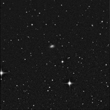 3c273 |
 Quasar 1226+31.8 |
 Quasar 2204-57.3 |
 TON 34 |
 TON 490 |
 QSO 2237+030 |
Have you ever wondered how far you can see at night? With the naked eye, most people can see the Andromeda galaxy which is about 2.2 million light years away. Observers with dark skies and keen eyesight can see M33 which is at about 2.4 million light years. The record with the naked eye for northern hemisphere observers is to the best of my knowledge, M81, at about 8 million light years. For the southern hemisphere it is the giant elliptical galaxy, NGC 5128 at an amazing 12 million light years.
But what about with a telescope? Well, the Virgo galaxies are around 40 million light years, but that is still our backyard. More interesting is the nearby elliptical galaxy NGC 4889, which at magnitude 11.5, is the brightest galaxy in the Coma Berenices galaxy cluster. This cluster is about 248 million light years distant. However this is not the limit if you have a 6" telescope.
Quasars are the most luminous objects known in the universe. They are also the most distant. The brightest quasar, 3C 273, is also in Virgo and so is well placed for viewing now. At magnitude 12.7, this is an easy object for a 6" telescope, and if the skies are dark, should be visible in a 4". Not bad for an object that is situated about 1800 million light years away!
But it that the limit? Most observers seem to stop here, but there are many objects accessible that are MUCH further away. Below are details of several quasars that are suitable for telescopes up to 18".
So, who is game to challenge themselves? Who will succeed with the smallest telescope? Just one tip. Since quasars appears star-like, high magnification can be used to darken the background sky, making it easier to see them.
 3c273 |
 Quasar 1226+31.8 |
 Quasar 2204-57.3 |
 TON 34 |
 TON 490 |
 QSO 2237+030 |